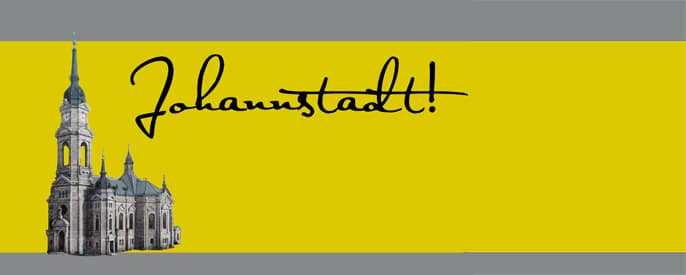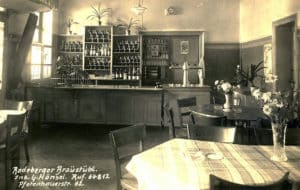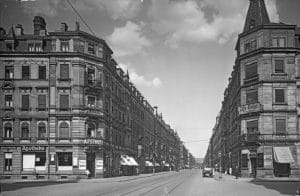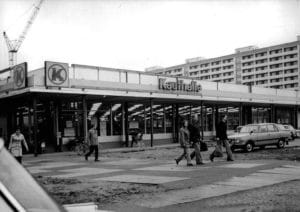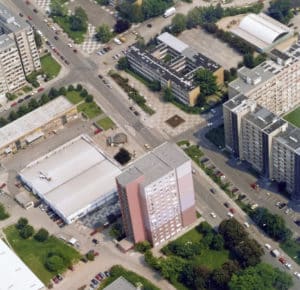This site is available in multiple languages: Deutsch, Русский, عربي.
Walk along the Lili-Elbe-Straße in the direction of Pfotenhauerstraße. At the intersection, you will reach the fourth location on the historical walking tour.
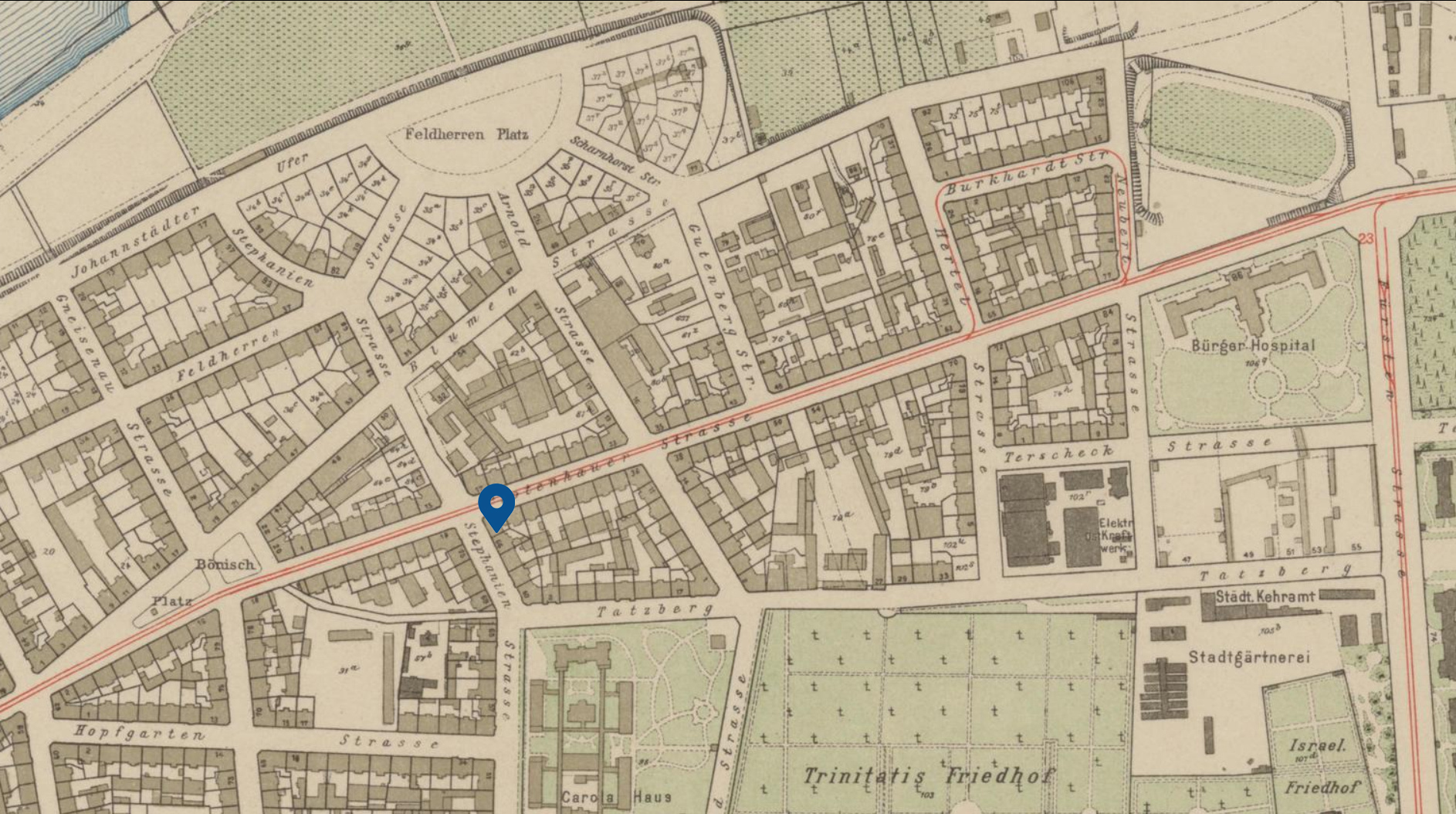
Before 1945: A mile of shopping and amusement
Pfotenhauerstraße
Today, Pfotenhauerstraße—also colloquially called “Pfote”—is still known as the “Main Street” of north Johannstadt. Until 1945, the street enjoyed tremendous popularity thanks to its shops and restaurants. Head mayor Friedrich Wilhelm Pfotenhauer (1812-1877) gave the street its name. Laid across open fields in 1876, the route was lined with strictly geometrical lots. That same year, the building company, Neue Germania AG, erected the first residential dwellings. However, due to an unclear definition of the adjacent commercial zone, construction soon came to a halt. Only after local statutes were changed in 1884—setting aside Pfotenhauerstraße exclusively for residences and shops—did active construction start up once again. Nine years later, residents celebrated the completion of a new tram line through Pfotenhauerstraße in 1893.
The street came to life with many specialty shops, establishments and bars. Flocks of people could be seen at all times of day thanks to the street’s vibrant development and wide sidewalks. Some representative stores and establishments of note:
No. 17: Sortimentsbuchhandlung Bruno Curth and Stephanienapotheke (see picture above)
No. 26: Arthur Schloßmann’s Polyclinic for Infants and Children, the first establishment of its kind in Germany
No. 33: Restaurant Elsasser Hof with its African Room (see picture below)
No. 37: Drema AG’s milk goods shop
No. 41: Max Schubert’s steam bakery and pastry shop (see picture below)
No. 48: Helm’s Restaurant
No. 57: Café Freitag
No. 59: Curt Ziegler’s glassgrinder’s and glassbender’s
No. 62: Inn Radeberger Bräustübl (see picture above)
No. 69: Otto Gründel butcher’s, with tavern and restaurant
No. 79: Velodrome, a sports field after 1921
No. 106: Johannstadt tram station (demolished after 1990)
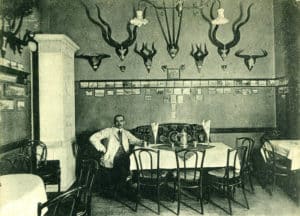
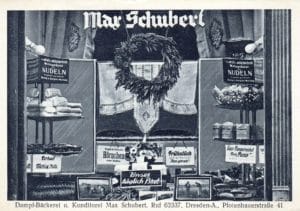
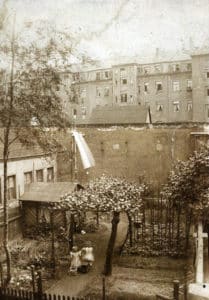
In rear courtyards, there were small and midsized businesses with steaming chimneys, hidden within their surrounding five-story block perimeter buildings. Among these were “Attilia-Fahrradbau”, the “Filmtechnischen Anstalten”, the “Curt Ziegler” hard glass bender’s (today “Tenza-Schmiede”), master painters and plumbers, various cigarette factories and chemical specialty firms. There were also small gardens located between firewalls and side buildings.
Find more information on the history of Pfotenhauerstraße here.
After 1945: Plattenbau and Kunst
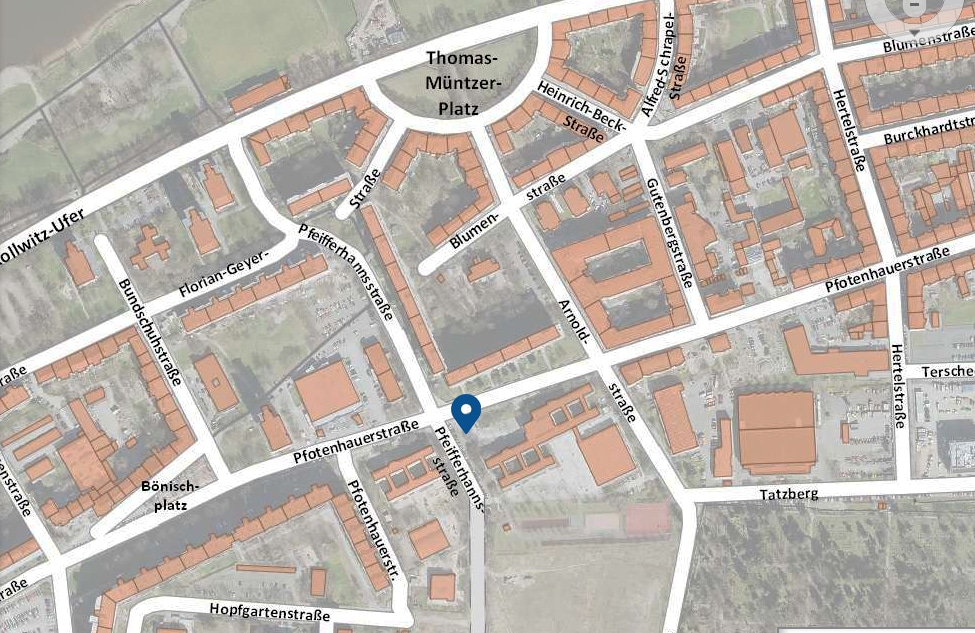
The new shopping street
After the Second World War and the partial destruction of the street’s buildings, Pfotenhauerstraße’s reputation as a lively residential and commercial street was largely lost. By the middle of the 1950s, nearly all the rubble from the war had been successfully cleared. The remaining wasteland was topped with ten- and eleven-story pre-fab concrete buildings in the 1970s, using materials produced in the neighboring concrete slab factory. A shopping mall and a service center with a laudromat, hairdresser, shoemaker and other businesses rounded off the site. Long vacant, the service center was torn down in 2018 to make room for an expanded shopping center.
The long-time first secretary for district leadership of the SED and penultimate Prime Minister of the GDR, Hans Modrow, lived in the ten-story No. 22. The Johannstadt branch of Konsum was nicknamed, “Modrow-Kaufhalle”, because of the image of better product choice available there compared to other establishments.
Find more information on the history of Pfotenhauerstraße here.
|
|
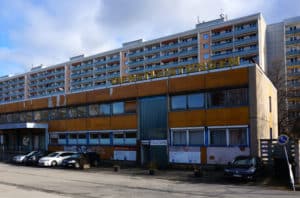
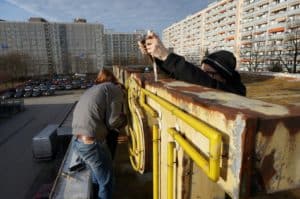
Johannstadt-Nord: a place for learning
In 1973, the 100th, 101st and 102nd Polytechnical High Schools were built, as so-called double-atrium constructions. As of 2019, the 102. primary school Johanna and Kunterbunte Hortplanet (Pfotenhauerstraße 40) have been located here, as well as the 101. high school Johannes Gutenberg and the Dresden Night School (Pfotenhauerstraße 42). On decision of the city council, in 2020 the Gymnasium Johannstadt joined at Pfotenhauerstraße 42, whereas the 101st High School shall be relocated to a new school buildling on Blüherstraße. Pupils from over 40 different countries receive their education at this location.
Kunst am Bau
The sculpture, “Spiral of Socialism” at the entrance to Pfotenhauerstraße 42 captivates with its slender, dynamic form and its incisive subject matter. Artist and sculptor, Johannes Peschel, born in 1931, created this sculpture in the manufacturing cooperative, “Kunst am Bau” (Art at the worksite), where he and nine other members had worked since 1960 as “artists of socialist construction” in the GDR. Even the widespread molded-concrete structural walls in Dresden from before 1989 harken back to Peschel’s sculptural creations. One such molded wall was located in front of the former service center on Pfotenhauerstraße until 2018.
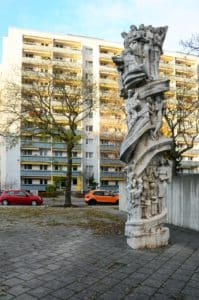
Text: Matthias Erfurth, Matthias Kunert, Henning Seidler
Editorial deadline: January 2024
